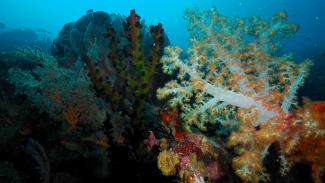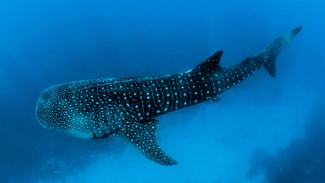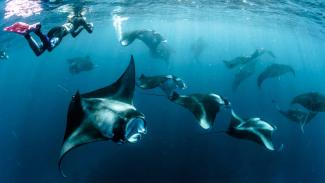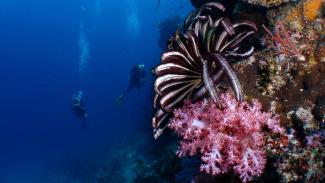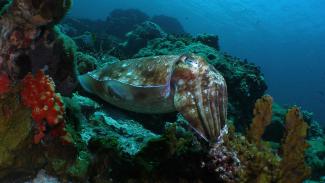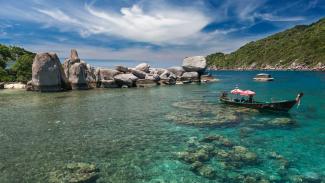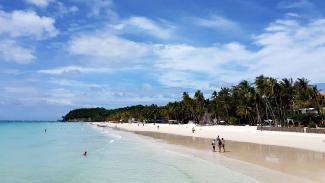
Cojo Rosales
Just off the northern tip of Panay Island, south of Mindoro is the small island of Boracay.
Famed for its white, powder sand beaches - reputed to be some of the world’s best - Boracay is one of the Philippines’ most famous tourist spots and is now open to visitors once again.
The island is also one of the most popular places to learn to dive in the Philippines, with a wide range of dive sites to suit all levels.
Highlights
Best diving spots
The west of the island has a small barrier reef with numerous good dive sites. Friday’s Rock, Santosan, Baling Hai, Angol Point & Coral Gardens are all easy, enjoyable dive sites that are perfect for beginners, where you can find lovely corals & plenty of life.
More experienced divers may wish to visit Yapak, a deep wall that is sometimes visited by Manta Rays and Hammerheads, plus numerous other Shark species. Punta Bonga & Virgin Drop are also excellent wall dives for more experienced divers.
To the south of Boracay Island, Crocodile Island & Laurel Island sit in a current swept channel, which feeds the beautiful soft corals & attracts plenty of life, including many Sea Snakes. Laurel Island also has a tunnel under the island that acts as a nice swim-through for divers.
To the north, Carabao Island has some colourful sloping reefs and a large open cave known as Cathedral Cave.
On Panay Island itself, Buruanga, Black Rock & Nasog Point are excellent dives with a good chance to spot pelagics, including occasional Manta Rays & Hammerhead Sharks. Maniguin, or Hammerhead Island off to the west is another great spot with plenty of corals, excellent fish-life and the chance of something bigger.
When to dive
The weather around Boracay is split into two distinct seasons. Amihan is the name for the seaon from October to May that is dicated by a cool north-east wind. Habagat - the south-west monsoon - lasts from June until September. It is possible to dive all year round, with the best months probably from March through to June.
Getting there
Getting to Boracay is fairly straight-forward. There are daily flights to Caticlan on the main Panay Island and from here, there are regular boats to take you to Boracay Island. There is also an airport in Kalibao, further south on Panay Island. For those who prefer to do things slowly, there is a ferry from Manila to Boracay, but it takes around 15 hours.
Activities
There are plenty of other activities on the island. Simply enjoying the stunning beaches keeps many happy, while boat trips & watersports are popular. It is also possible to do a little horse-riding and even rock-climbing. There are many gift shops and also great range of places to eat. The nightlife can be very lively here, especially in peak season.
Resort and liveaboard options
Boracay has many resorts and dive centres to choose from, the majority of which are on or around White Beach.


